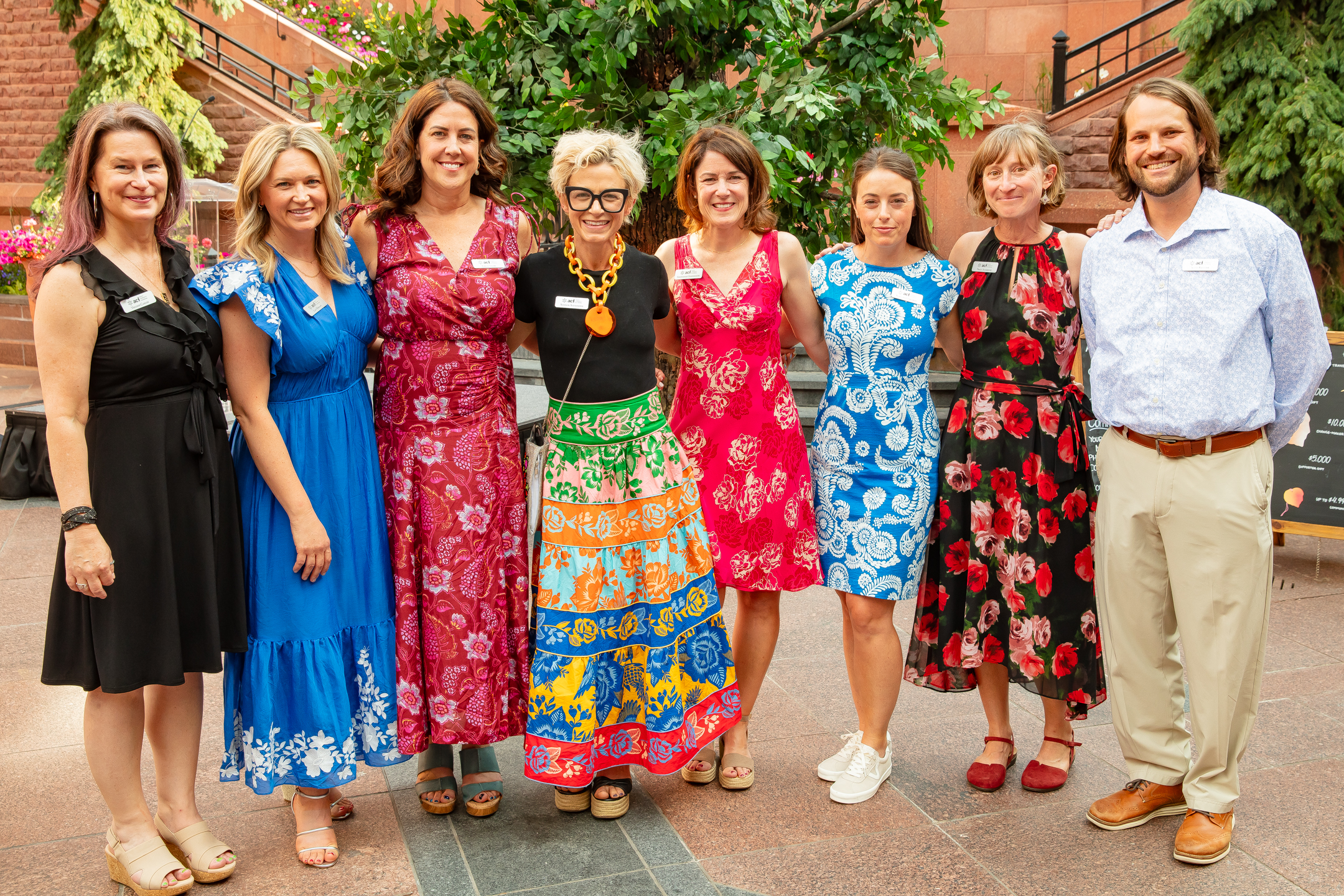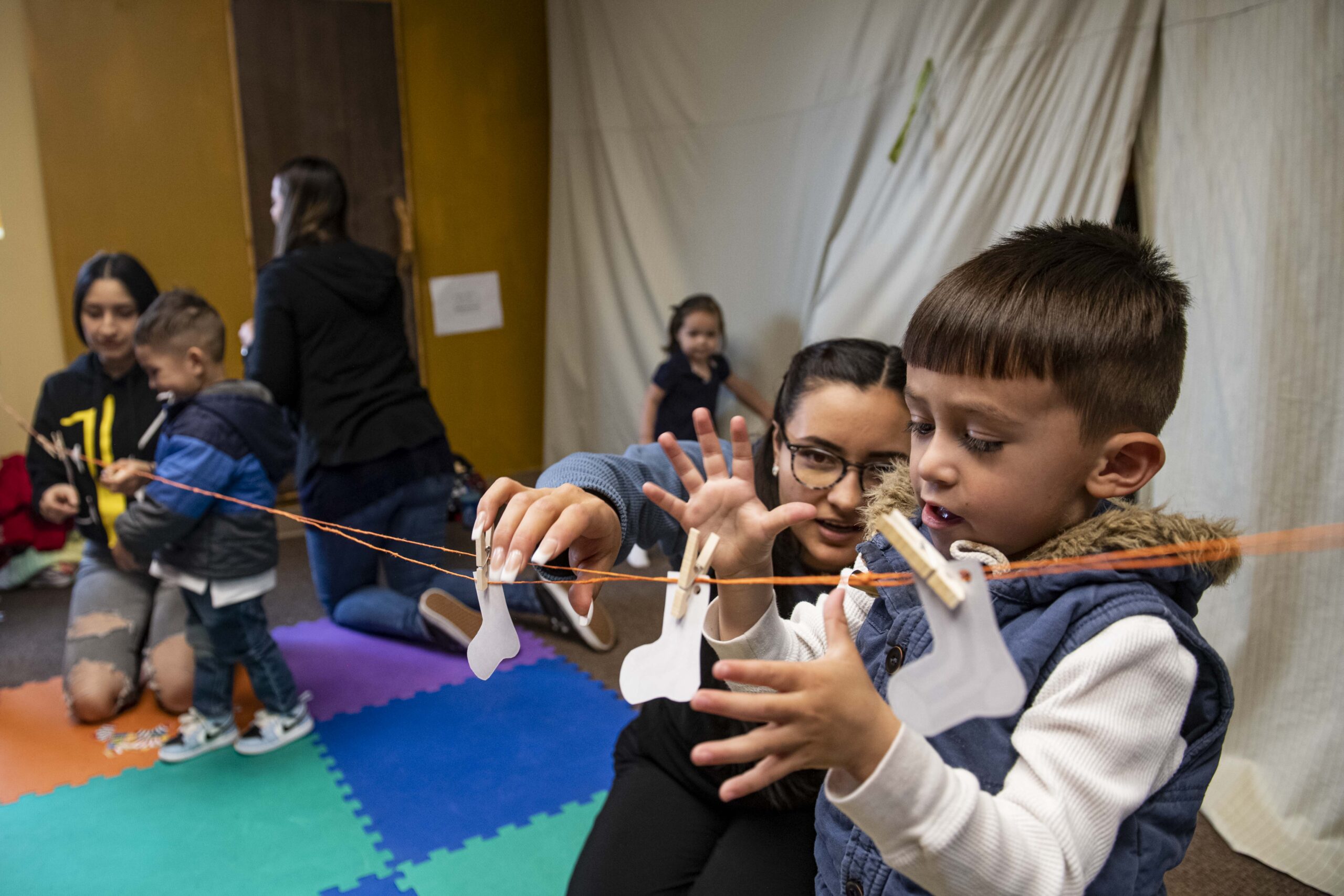

All too often in the world of philanthropy, we come up with solutions that aren’t really rooted in people’s actual needs and apply them without the kind of systematic study that would greatly improve our likelihood of success.
Rob Pew, president of the Carbondale-based MANAUS, puts it this way: “In philanthropy we often want to jump to solutions and many times it’s the flavor of the month. We sometimes lose focus on the people we’re trying to help and get stuck in creating whiz-bang programs. We might rely upon data without understanding the stories behind the data. We also fail to understand the systems that are at work.”
Rob Pew, president of the Carbondale-based MANAUS, puts it this way: “In philanthropy we often want to jump to solutions and many times it’s the flavor of the month. We sometimes lose focus on the people we’re trying to help and get stuck in creating whiz-bang programs. We might rely upon data without understanding the stories behind the data. We also fail to understand the systems that are at work.”
Imagine we’re designing a program to solve or alleviate a complex social problem. We might approach it with preconceived ideas or ready-made solutions about what we think should work. What if instead we engaged the intended beneficiaries, listened to their experiences, allowed them to “test” the program, and then continued tweaking, improving, streamlining based on their feedback? This approach, grounded in the belief that the people who face the problems every day are the ones who hold the key to their answer, is known as “human-centered” design.
Used for decades to create products and services, human-centered design is now being used in the social sector as a way to solve seemingly intractable problems like improving the lives of people in poor communities or providing access to clean water. It may sound like an industrial or architectural process, but it’s really a method of creative collaboration.
It is basically a three-step process. First, you start with inspiration: developing a deep understanding of the problem. This includes research and data but most importantly, talking to the people impacted and understanding their needs. Then you move to ideation: bringing all this information together, brainstorming ideas and creating prototype solutions. Finally, implementation: introducing the solution to the people for whom it is intended. The entire process is iterative; it is highly likely that during the implementation phase you learn new things and need to start over.
Pew, also an Aspen Community Foundation board member, believes philanthropy could benefit from human-centered design. In a charitable context, human-centered design means that nonprofits sharpen their ideas and create their programs not for their clients and constituents, but with their clients and constituents. So, in the same way that you would test a product before putting it on the market, charitable organizations practicing human-centered design include their clients and stakeholders in the development of their programs.
“Using human-centered design we can further our understanding of the people’s needs and have a methodology for defining or redefining the programs that serve them,” said Pew.
MANAUS and Aspen Community Foundation hosted a pair of workshops on July 16 and 17 to expose philanthropists and nonprofit organizations to the idea of human-centered design and its potential for the social sector.
The workshops were facilitated by Sharehold, a New York-based firm focused on facilitating human-centered design processes for nonprofit organizations, government agencies and community groups. Sharehold’s vision is to normalize the idea of involving all stakeholders – from investors to clients – to increase equity within systems, products, and programs.
“Human-centered design empowers change makers to practice creative problem solving with all stakeholders, creating an end result of inclusive and validated solutions with people who will ultimately be using them,” said Allie Mahler, co-founder and CCO of Sharehold. “It has the ability to create solutions to problems that no one individual could have created on their own.”
Participants in both workshops learned about the three stages of the design thinking process, giving them a flavor of human-centered design methodology.
In the workshop tailored for philanthropists, participants received in-depth overview and examples of human-centered design in practice as well as a discussion and brainstorming on how this process can inform the future of philanthropy.
Nonprofit organization leaders learned the basic of human-centered design and rolled up their sleeves and challenged themselves to develop ideas with humans at the center of the solution. The goal was to inspire nonprofit leaders to bring the creative mindsets and practices of human-centered design back to their organizations.
“Human-centered design has the ability to create more inclusive philanthropy and social sector practices,” Mahler said. “Already we see exciting ‘co-design’ examples in the social sector where foundations and organizations co-create solutions alongside the people who will ultimately use the service or product. We believe this way of human-centered thinking needs to become the norm in all organizations and communities.”
It is basically a three-step process. First, you start with inspiration: developing a deep understanding of the problem. This includes research and data but most importantly, talking to the people impacted and understanding their needs. Then you move to ideation: bringing all this information together, brainstorming ideas and creating prototype solutions. Finally, implementation: introducing the solution to the people for whom it is intended. The entire process is iterative; it is highly likely that during the implementation phase you learn new things and need to start over.
Pew, also an Aspen Community Foundation board member, believes philanthropy could benefit from human-centered design. In a charitable context, human-centered design means that nonprofits sharpen their ideas and create their programs not for their clients and constituents, but with their clients and constituents. So, in the same way that you would test a product before putting it on the market, charitable organizations practicing human-centered design include their clients and stakeholders in the development of their programs.
“Using human-centered design we can further our understanding of the people’s needs and have a methodology for defining or redefining the programs that serve them,” said Pew.
MANAUS and Aspen Community Foundation hosted a pair of workshops on July 16 and 17 to expose philanthropists and nonprofit organizations to the idea of human-centered design and its potential for the social sector.
The workshops were facilitated by Sharehold, a New York-based firm focused on facilitating human-centered design processes for nonprofit organizations, government agencies and community groups. Sharehold’s vision is to normalize the idea of involving all stakeholders – from investors to clients – to increase equity within systems, products, and programs.
“Human-centered design empowers change makers to practice creative problem solving with all stakeholders, creating an end result of inclusive and validated solutions with people who will ultimately be using them,” said Allie Mahler, co-founder and CCO of Sharehold. “It has the ability to create solutions to problems that no one individual could have created on their own.”
Participants in both workshops learned about the three stages of the design thinking process, giving them a flavor of human-centered design methodology.
In the workshop tailored for philanthropists, participants received in-depth overview and examples of human-centered design in practice as well as a discussion and brainstorming on how this process can inform the future of philanthropy.
Nonprofit organization leaders learned the basic of human-centered design and rolled up their sleeves and challenged themselves to develop ideas with humans at the center of the solution. The goal was to inspire nonprofit leaders to bring the creative mindsets and practices of human-centered design back to their organizations.
“Human-centered design has the ability to create more inclusive philanthropy and social sector practices,” Mahler said. “Already we see exciting ‘co-design’ examples in the social sector where foundations and organizations co-create solutions alongside the people who will ultimately use the service or product. We believe this way of human-centered thinking needs to become the norm in all organizations and communities.”






